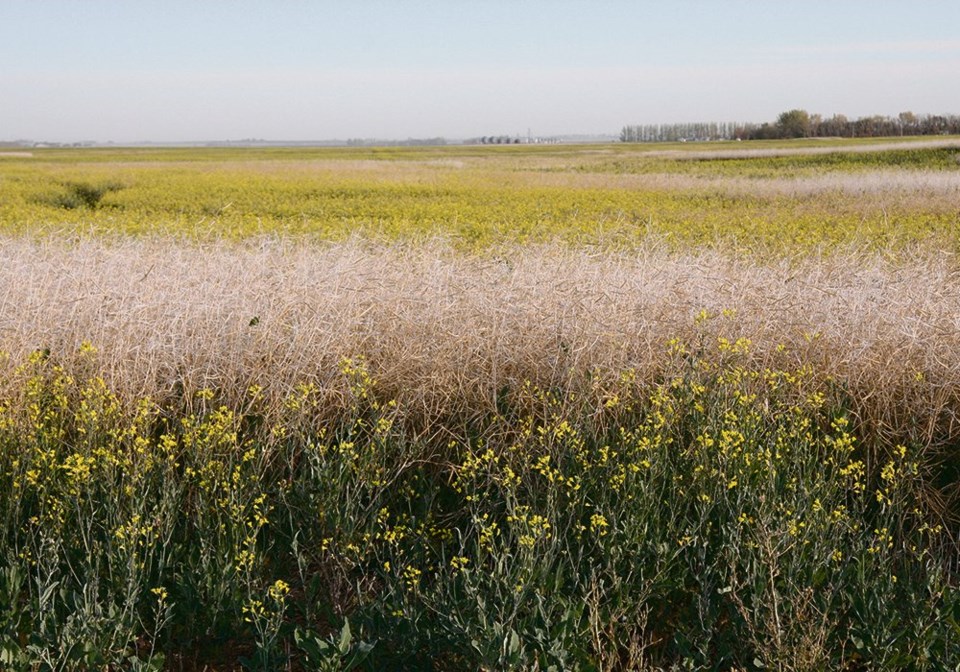There was rainfall across the province this week, accumulations ranging from 0 to 53.8 mm. Rainfall occurred in all regions with the Central and Eastern regions receiving the highest amounts. The highest amount of rainfall was at Deloraine with 61.2 mm.
Southwest
Hot temperatures continued throughout the week, with some rain events occurring in the southern part of the region. Most crops are starting to show the effects of dry conditions and heat. Recent rains are helping late seeded crops reach their full potential, but early seeded crops have already suffered due to the lack of moisture.
Fungicide applications are now complete
Winter wheat and fall rye have completed head fill and are entering the seed color change stage, with harvest for several fields not far off. Spring cereals are in the head fill stage, and early seeded fields are starting to change color. Barley and oats are filling well. Reduced tillering and smaller heads on tillers has been noticed in somefields.
Corn is currently in the pre-tassel stage, around V7, with some tassels beginning to emerge The crop is dark green and coping well with dry conditions. However, fields on light, sandy soils without recent rainfall are showing severe stress.
Most canola crops are finishing bloom and entering the podding stage, as heat and dry conditions have shortened the flowering period. There are currently no major insect concerns, though producers are monitoring their fields closely. Flax crops are in full bloom but are shorter than usual. Sunflowers are at or near the R2–R4 stage, with several strong crops observed.
Early seeded soybeans are approaching the R3 growth stage, while later-seeded crops are in the late R1 to R2 stages. The crops are in fair condition but require additional rainfall. Some disease symptoms have been reportedin certain areas. Late weed growth is also present where plant stands are thin.
Most pea crops have completed flowering and are in the pod fill stage. Fungicide applications for disease management are largely complete. Aphids and related damage are being monitored, but no significant damage has been reported so far.
Northwest
A smoky start to the week, with temperatures climbing near the weekend. Parts of the region received precipitation, with Ethelbert station receiving highest accumulated amount at 23.2 mm. Soil moisture and water resources continue to decline with lack of precipitation. Most crops would still benefit from rain.
Where moisture has been limited and/or lighter soils, crops are showing symptoms of stress.
Fall rye and winter wheat crops moved into the hard dough stage. Pre-harvest applications have started in crops that reached appropriate stages.
Spring wheat crops are mostly in the late milk/early soft dough stage, while the remainder of spring wheat crops follow behind.
Field peas are mostly in the R4-R5, with a few advanced fields into the R6 stage.
Canola crops continue to be varied across the region. Depending on seeding date and moisture conditions for germination, crop stages differ greatly. While most advanced fields are in seed development stage, the remainder follows behind in flowering stage. Recent high temperatures have caused some pod abortion.
Soybean crops are mostly looking good and are at the late R3 stage.
(Government of Manitoba News Release)



